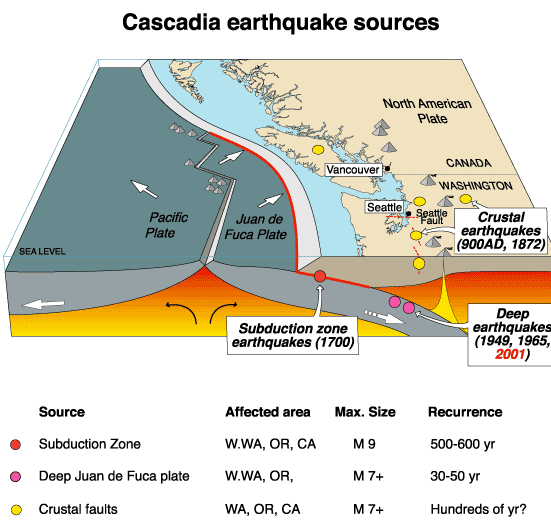The Impending Threat of the Cascadia Subduction Zone
In 2011, seismologist Chris Goldfinger was attending an international conference in Kashiwa, Japan, when a powerful earthquake shook the region, quickly escalating from a minor tremor to one of the most severe seismic events in history. Goldfinger, who had been accustomed to the frequent minor quakes in Japan, checked the time before realizing the shaking was unusually prolonged. As the duration surpassed a minute and a half, panic ensued, and attendees quickly evacuated outside.
Understanding the Cascadia Fault Line
The Tohoku earthquake registered a magnitude of 9.0, a scale far beyond what scientists expected for the region. Historically, it was thought Japan could not sustain quakes stronger than 8.4. However, this incident underscored the precarious reality of seismic predictions. The Cascadia subduction zone, stretching for 700 miles along the Pacific Northwest, might be on the brink of a catastrophic event that would rival Tohoku.
The Cascadia subduction zone is where the oceanic Juan de Fuca Plate slips beneath the North American Plate, creating stress that builds up over decades or centuries. Geologists estimate that when this fault line finally gives way, it could trigger earthquakes with magnitudes ranging from 8.0 to 9.2.
The Potential Impact of the Next Big Earthquake
A full-margin rupture of the Cascadia zone could have devastating consequences. Estimates suggest that such an event would result in:
- Thirteen thousand casualties.
- Twenty-seven thousand injuries.
- Approximately one million people needing shelter.
The Pacific Northwest’s infrastructure, including bridges, hospitals, and schools, may also face severe damage, leading to a widespread humanitarian crisis. The region’s preparedness is woefully inadequate, with the majority of buildings constructed before stringent seismic codes were implemented.
Disaster Response and Preparedness
The challenge of preparing for a Cascadia earthquake encompasses not only structural readiness but also public awareness and response capability. Currently, there is no early-warning system in place for residents in the region. When the quake hits, people will have mere seconds to react. As recovery estimates indicate prolonged power outages and loss of basic utilities, the potential for secondary disasters, such as landslides and tsunamis, looms ominously.
Those living along the coast will need to reach higher ground after the initial earthquake tremors. However, many residents may not be equipped with adequate evacuation plans or awareness of tsunami risks. An estimated 71,000 individuals reside in areas prone to inundation, and the need for effective evacuation routes is critical.
Table: Expected Casualties and Impacts from Cascadia Earthquake
| Category | Estimated Numbers |
|---|---|
| Casualties | 13,000 fatalities |
| Injuries | 27,000 injuries |
| Displaced Persons | 1,000,000 needing shelter |
As scientists like Goldfinger continue to study the underlying geological forces at play, it is increasingly clear that the Pacific Northwest faces a significant and imminent threat. The urgent need for preparedness, planning, and education is paramount to mitigate the devastating impact of an event that has been long overdue.

